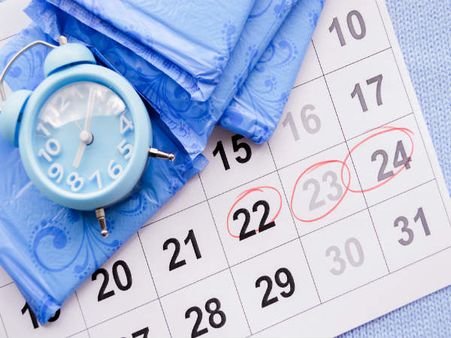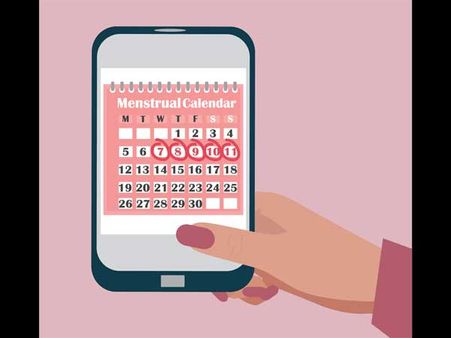Just In
- 4 hrs ago

- 14 hrs ago

- 15 hrs ago

- 19 hrs ago

Don't Miss
- Finance
 1:2 Split Soon: Tata's 79-Year-Old Auto Giant Rises 3,013% Before Splitting; Target Prices Rs 1,300-1,500
1:2 Split Soon: Tata's 79-Year-Old Auto Giant Rises 3,013% Before Splitting; Target Prices Rs 1,300-1,500 - Movies
 Deepak Parambol And Aparna Das Tie The Knot At Guruvayur Temple! Check Out The Wedding Glimpses!
Deepak Parambol And Aparna Das Tie The Knot At Guruvayur Temple! Check Out The Wedding Glimpses! - Automobiles
 Honda Amaze Scores 2-Star Safety Rating At Global NCAP Crash Tests – Next-Gen Model To Arrive In 2025
Honda Amaze Scores 2-Star Safety Rating At Global NCAP Crash Tests – Next-Gen Model To Arrive In 2025 - Sports
 ONE Friday Fights 60: Start Time, Card, Telecast & Live Streaming Details
ONE Friday Fights 60: Start Time, Card, Telecast & Live Streaming Details - Education
 The TS Inter Manabadi Results 2024 will be Announced at 11:00 a.m. Today
The TS Inter Manabadi Results 2024 will be Announced at 11:00 a.m. Today - News
 EVMs-VVPAT Slips 100% Matching Plea: Supreme Court To Pronounce Verdict Today
EVMs-VVPAT Slips 100% Matching Plea: Supreme Court To Pronounce Verdict Today - Technology
 Vivo T3x 5G Goes on Sale in India at 12 noon Today via Flipkart: Check Price, Specs, Offers
Vivo T3x 5G Goes on Sale in India at 12 noon Today via Flipkart: Check Price, Specs, Offers - Travel
Kurnool's Hidden Gems: A Guide To Exploring India's Lesser-Known Treasures
Menstrual Hygiene Day 2020: How To Chart Your Menstrual Cycle
On the oocasion of Menstruation Hygiene Day on 28 May, let's speak about how you can effectively chart a menstrual cycle. It helps keep track of your fertility biomarkers, body temperature and cervical mucus and makes you understand how you can use this information to avoid pregnancy or get pregnant, manage your menstrual symptoms properly and know what problems may occur.

Well, the period is not a random occurrence every month, but a time-bound natural phenomenon that occurs to every woman (after puberty) every month. That's why the charting of the menstrual cycle is very important to know more about your body and your health.


What Is Menstruation?
Menstruation is a medical term for your periods characterised by vaginal bleeding every month. Females who have reached their puberty age (10-14) will experience the start of their menstruation. The menstrual cycle (MC) comprises around 28 days (24-38 days in general) and period or vaginal bleeding is just the first phase of the cycle.
Every month, the uterus prepares itself for a possible pregnancy by thickening its lining or endometrium. This is done when the brain sends out signals during the first phase of the cycle to release estrogen hormone made by ovaries. The hormone helps in growing and thickening the uterus lining.
If pregnancy does not occur, the lining starts shedding causing a period that lasts for 3-8 days. The time of the stay of the period varies from one woman to another and may get changed over the years.
Penetration sex (penis-in-vagina-sex) is the main cause of pregnancy. So, by keeping a note ofthe menstrual cycle, one can fully understand how pregnancy preparation works.

The 28 Days Of Menstrual Cycle
- Day 1: The first day of the period is considered as the Day 1 of the menstrual cycle. Low levels of estrogen during the time can make you feel irritated or depressed.
- Day 2-5: Bleeding is more during the second day. Follicles containing eggs will start developing in the ovaries.
- Day 5-7 days: Only one follicle will continue growing while the rest will get absorbed back in the ovary.
- Day 8-14: Period will stop. Estrogen levels will get high and the lining of the uterus will start getting thicker and filled with more blood and nutrients.
- Day 14: Estrogen level will peak. The follicle will burst and the egg will be released from the ovary.
- Day 15-24: The egg is carried to the uterus from the ovary with the help of a fallopian tube. Progesterone hormone produced by the ruptured follicle will also help in thickening the uterus lining. If fertilisation occurs, the eggs will attach to the lining of the uterus.
- Day 24-28: If the egg is not fertilised, it breaks down. Estrogen and progesterone levels drop causing mood swings. The brain signals to begin the shedding process of the old lining.


Phases Of The Menstrual Cycle
There are three phases of the menstrual cycle:
1. Follicular phase
The time between 1-14 days is referred to as the follicular phase. It starts with the first day when a woman starts bleeding. The pituitary gland produces a hormone named follicle stimulating hormone (FSH) that signals follicles to rise from the ovary's surface.
In a lifetime of a female, only around 300-400 follicles get ovulated or matured out of three lakhs. Every month, out of these many follicles, only one of the follicles get dominant and gets matured while the rest are absorbed back by the ovary. If two get mature, twins are born.
During these 14 days, the follicle matures and the lining of the uterus also gets thicker. This is due to the estrogen hormone that a mature follicle produces. The hormones keep rising day by day and peak on Day 12. The high levels of estrogen signal the pituitary gland to release luteinizing hormone (LH) that causes rupturing of the egg. The LH is also responsible for increase in the sex drive in women.
2. Ovulatory Phase
Day 14 is considered the most fertile time of the month. The follicle ruptures and releases the egg that travels to the uterus with the help of a fallopian tube. If any sperm is present in the tube, the egg gets fertilised and implanted to the uterus.
Sperm can survive for up to 3-5 days in a female's reproductive organs. Having penetration sex on the 14th day or even three days prior to the ovulation can cause pregnancy.
3. Luteal Phase (15-28)
It is the time between the 14- 28 days of the menstrual cycle. During the luteal phase, the egg gets fertilised or doesn't. When the egg is released, the ruptured follicle (corpus luteum) produces the hormone named progesterone which also helps in thickening the lining of the uterus. In case, the egg gets fertilised, the hormone supports in the early stage of the pregnancy (during implantation).
If the egg is not fertilised, the corpus luteum along with the egg come out with the vaginal blood.

What Is Cervical Mucus?
Curvical mucus occurs during the menstrual cycle. It is a vaginal discharge that varies in colour, texture and amount during the whole cycle. Checking cervical mucus helps to know your ovulation timing, time to have safe sex and time to get pregnant.
Cervical Mucus Stages
- Day 1-4 of MC: Bleeding
- Day 5-7 after the period: Dry (safe)
- Day 8-10: Sticky (safe)
- Day 11-12: Cloudy (unsafe)
- Day 13-14: Wet and Slippery, like a raw egg whites (unsafe)
- Day 15-24: Cloudy, wet, slippery or sticky (safe)
- 24-27: Dry
Note: Cervical mucus just gives an idea about your MC. The ovulation period varies from woman to woman. The egg is viable between 12-24 hours after its ovulation. If you want to be on the safe side, have protected sex between the days 10-15. Having unprotected sex even after day 15 or before day 10 does not always guarantee safety the pregnancy.

How To Track
- Do a simple tracking on an app or in the paper.
- Start from the first day of your period.
- Note down the emotions, mood change and feelings of each day.
- Keep a note of your health such as tiredness, stomach pain, bloated stomach or sleepiness.
- Check your cervical mucus every day.
- Also, note down the dreams you saw. Don't forget to mention when you had no dreams.
-
 womenJosh Partners With Goonj For Their Chuppi Todo Campaign To Break Silence On Myths, Taboos On Menstrual Hygiene
womenJosh Partners With Goonj For Their Chuppi Todo Campaign To Break Silence On Myths, Taboos On Menstrual Hygiene -
 healthMenstrual Hygiene Day 2023: How To Use A Menstrual Cup And Tampon For Beginners
healthMenstrual Hygiene Day 2023: How To Use A Menstrual Cup And Tampon For Beginners -
 healthMenstrual Hygiene Day: Are Menstrual Cups Right For You? Who Should Avoid?
healthMenstrual Hygiene Day: Are Menstrual Cups Right For You? Who Should Avoid? -
 healthMenstrual Hygiene Day: Is It Safe To Skip Your Period?
healthMenstrual Hygiene Day: Is It Safe To Skip Your Period? -
 healthMenstrual Hygiene Day 2023: The Dos And Don'ts Of Healthy Menstruation
healthMenstrual Hygiene Day 2023: The Dos And Don'ts Of Healthy Menstruation -
 pregnancy parentingMenstrual Hygiene Day 2023: Are Painful Periods A Sign Of Good Fertility?
pregnancy parentingMenstrual Hygiene Day 2023: Are Painful Periods A Sign Of Good Fertility? -
 womenMenstrual Hygiene Day 2023: Indian States With The Lowest Menstrual Hygiene
womenMenstrual Hygiene Day 2023: Indian States With The Lowest Menstrual Hygiene -
 astrologyMenstrual Hygiene Day 2023: How To Deal With Your Periods Based On Your Zodiac Sign
astrologyMenstrual Hygiene Day 2023: How To Deal With Your Periods Based On Your Zodiac Sign -
 healthMenstrual Hygiene Day 2023: Habits That Can Increase Period Pain
healthMenstrual Hygiene Day 2023: Habits That Can Increase Period Pain -
 healthMenstrual Hygiene Day 2023: Painkillers For Period Pain, How Many A Day Is Safe?
healthMenstrual Hygiene Day 2023: Painkillers For Period Pain, How Many A Day Is Safe? -
 healthMenstrual Hygiene Day 2023: How To Prevent Bad Odour From Pad?
healthMenstrual Hygiene Day 2023: How To Prevent Bad Odour From Pad? -
 wellnessWhat Is Menstrual Hygiene Management And How To Dispose Of Menstrual Waste Effectively?
wellnessWhat Is Menstrual Hygiene Management And How To Dispose Of Menstrual Waste Effectively?


 Click it and Unblock the Notifications
Click it and Unblock the Notifications



